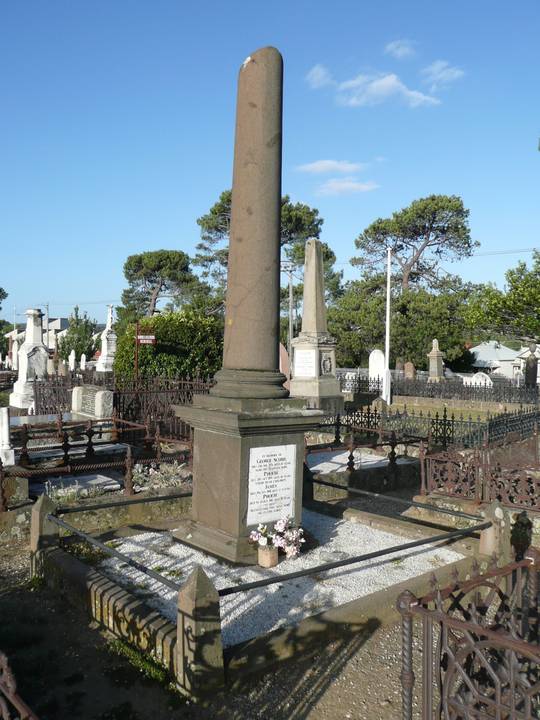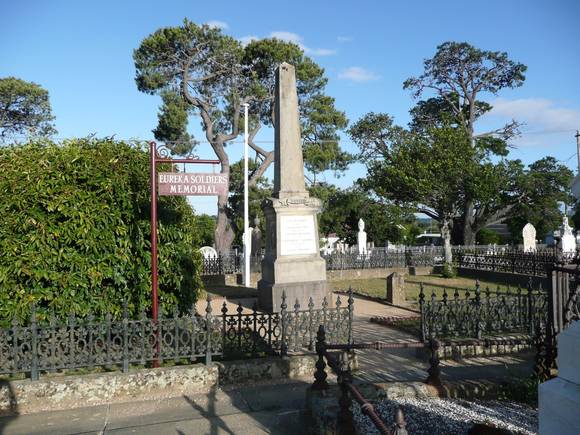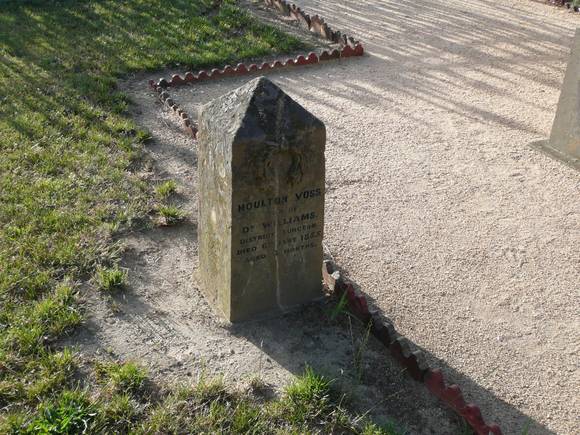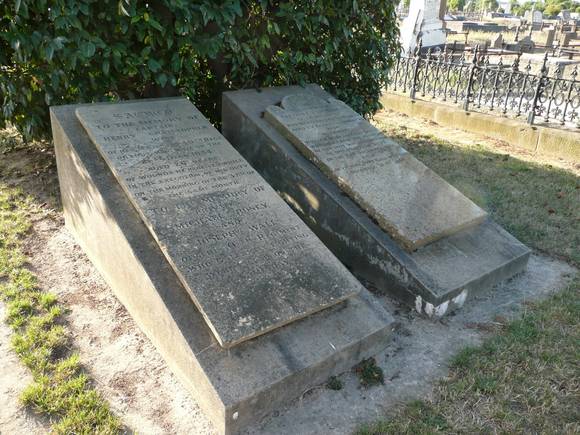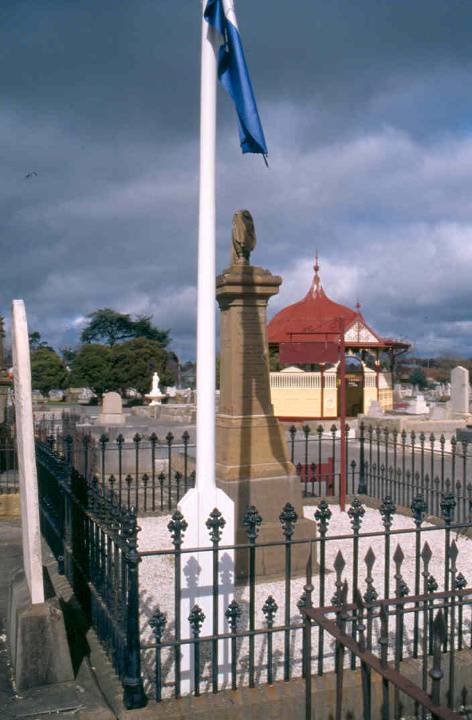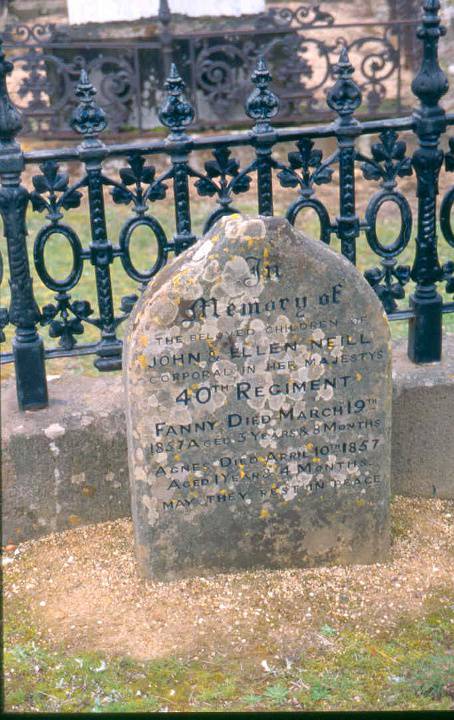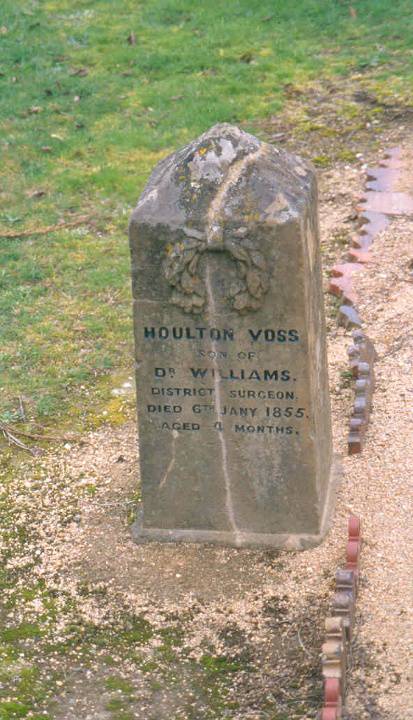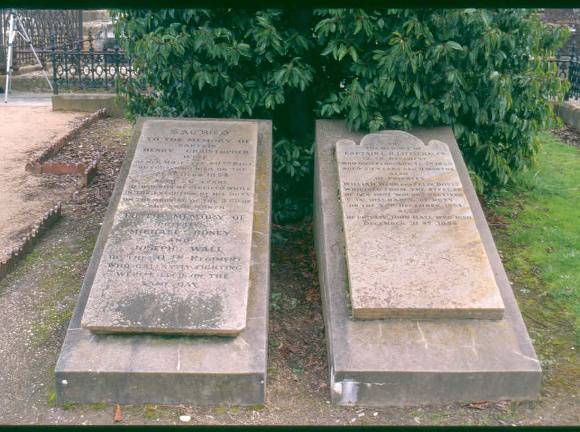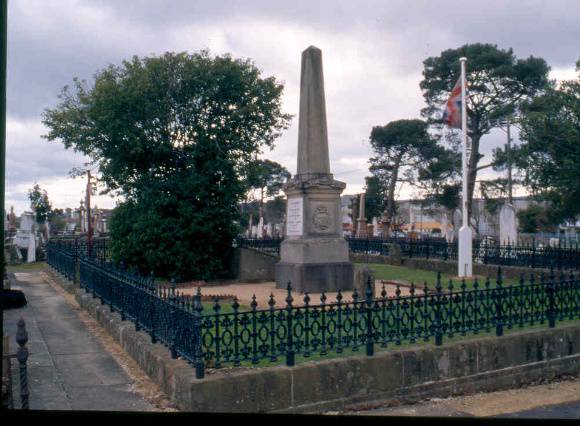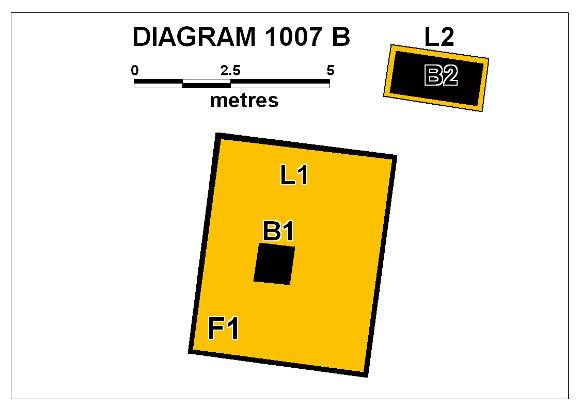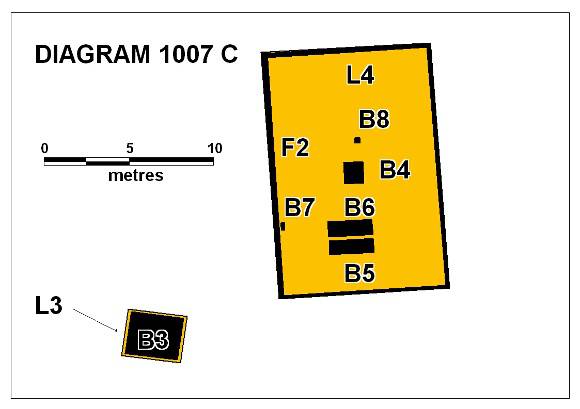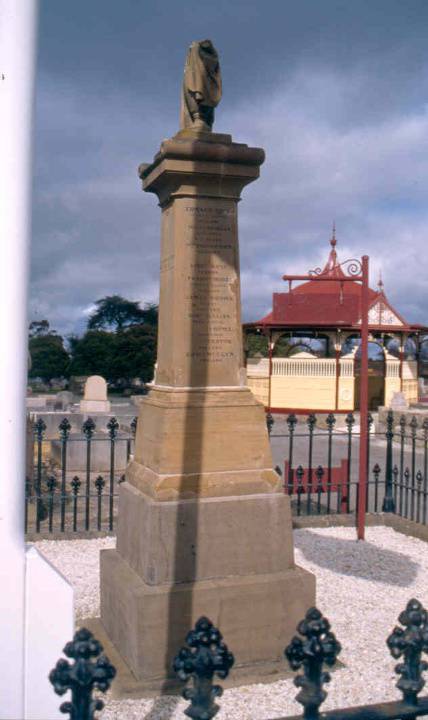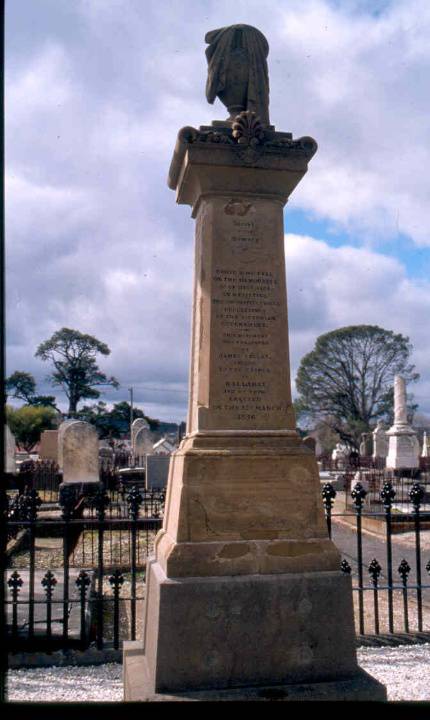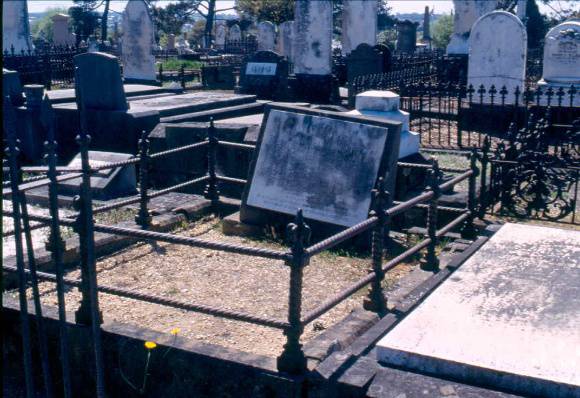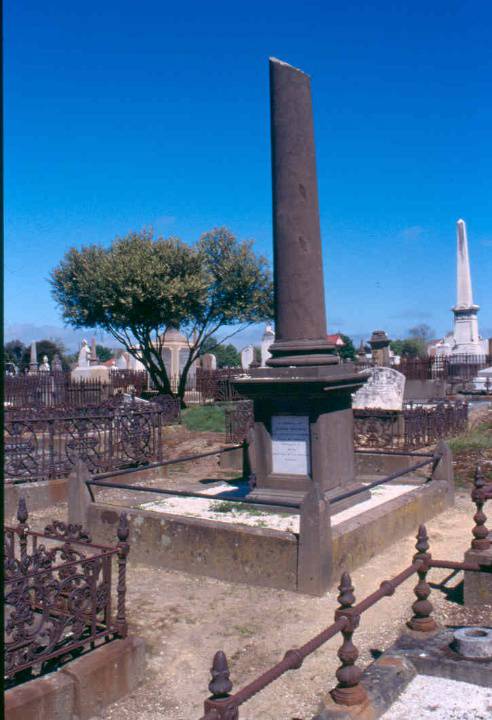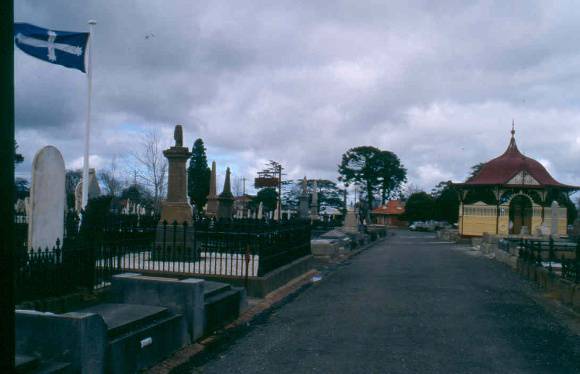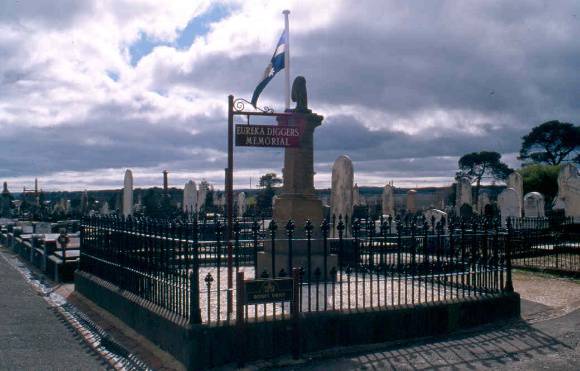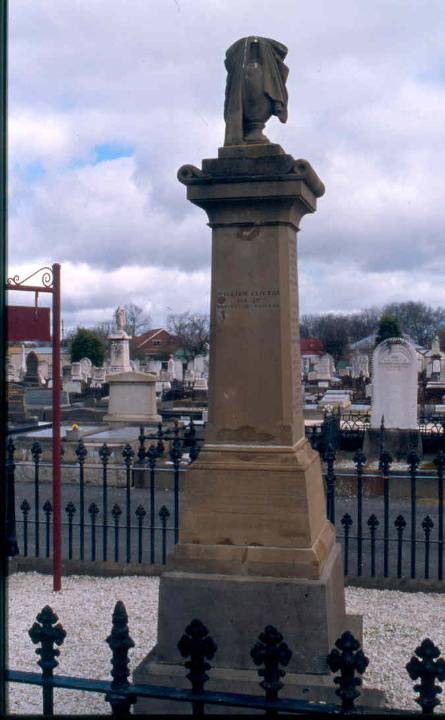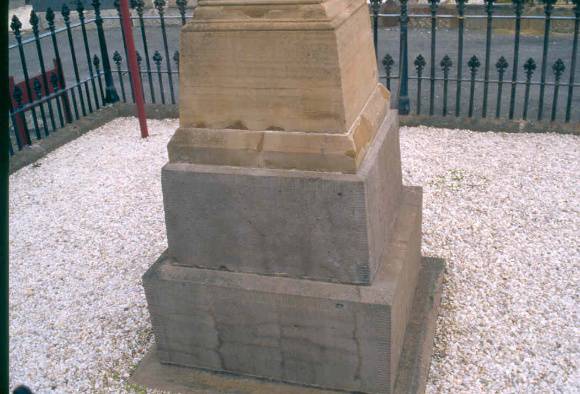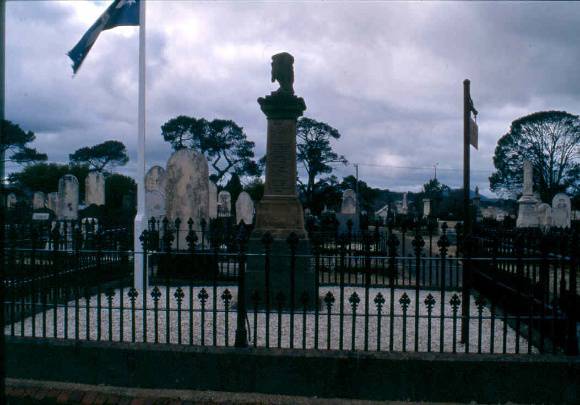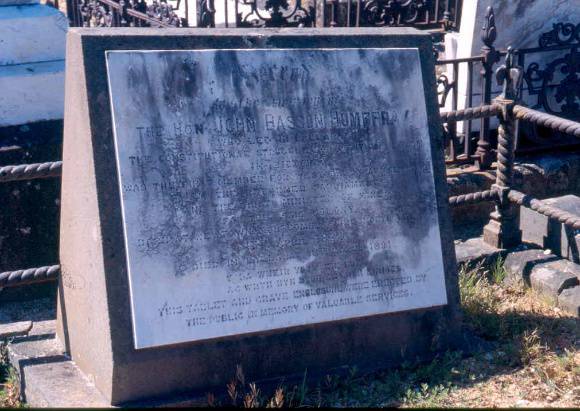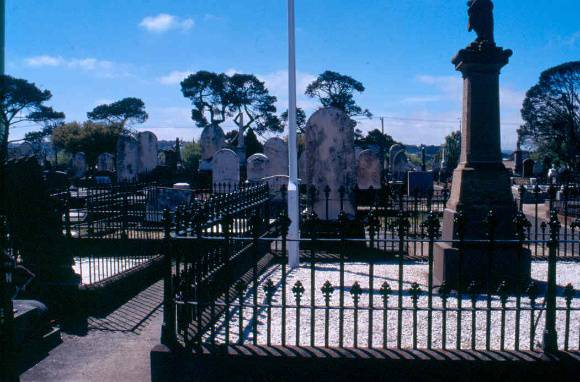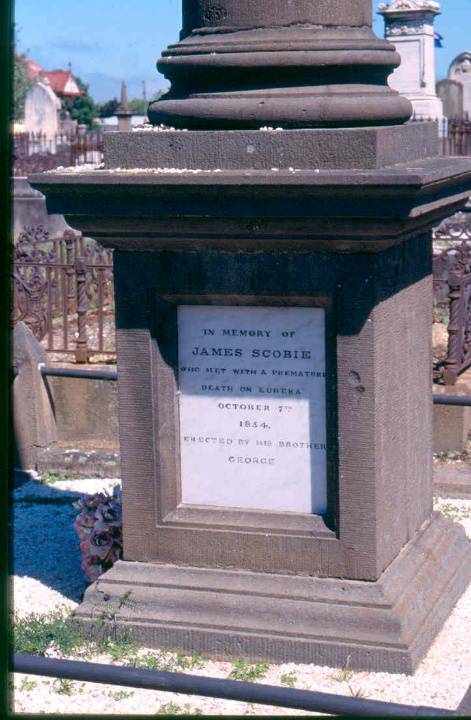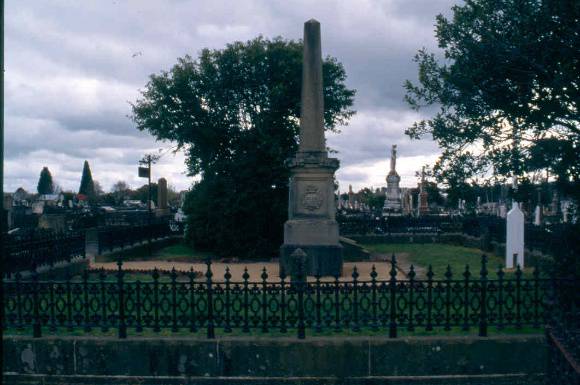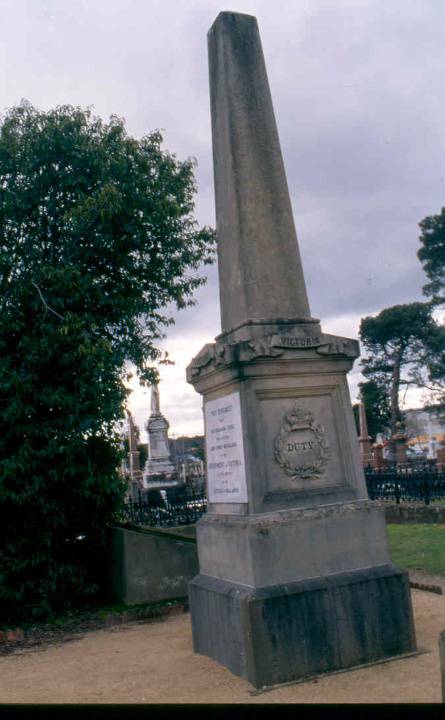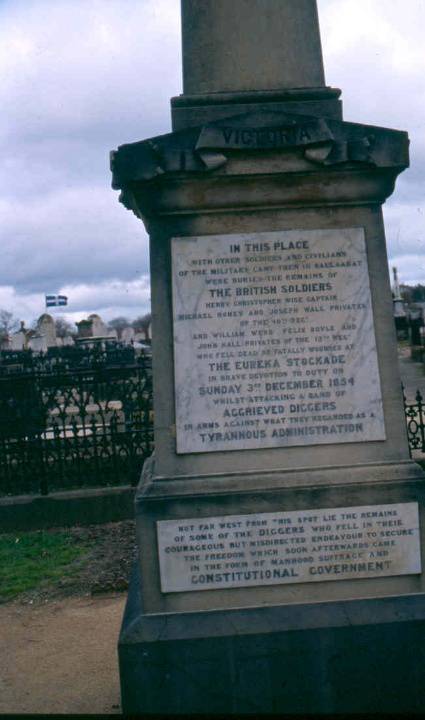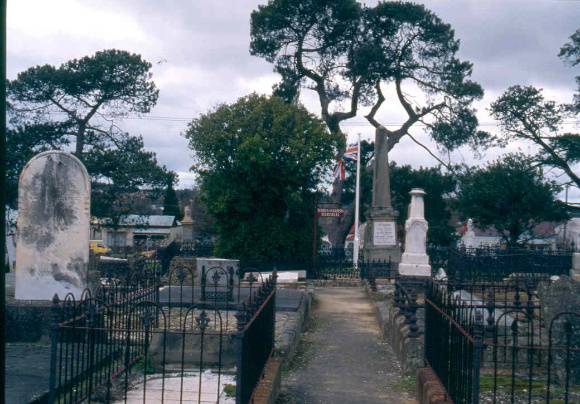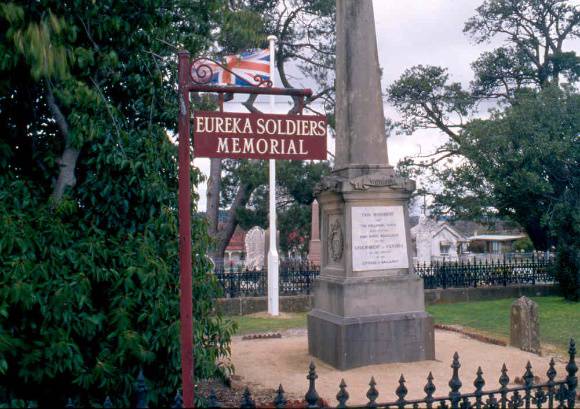| Back to search results » | Back to search page » |
|
EUREKA MEMORIALS, OLD BALLARAT CEMETERY
Statement of Significance
What is Significant? The diggers' and soldiers' memorials were erected in the Ballarat Cemetery to commemorate those miners and members of the 40th and 12th Regiments who died as a result of the fighting at the Eureka Stockade on 3 December 1854. The diggers' memorial was built in 1856 and the soldiers' memorial in 1879 and, together with associated marked graves, they commemorate a significant event in Australian history. This confrontation between soldiers and miners occurred as a result of the injustices of the gold licence fees and the administration system imposed on the goldfields population by the government. The ensuing battle became legendary as a defining moment that shaped Australia's history. After the confrontation, many of the diggers were buried in a common grave and the military buried separately at Ballarat Cemetery. The diggers' monument was a gift to the people of Ballarat from its sculptor, James Leggatt of Geelong. Constructed of Barrabool freestone, the monument consists of a square pillar containing the names of the deceased miners with a carving of a funerary urn draped in cloth on a scrolled plinth. The west face bears the following inscription: "Sacred to the memory of those who fell on the memorable 3rd of December, 1854, in resisting the unconstitutional proceedings of the Victorian Government. This monument was presented by James Leggatt, Geelong to the people of Ballarat and by them erected on the 22nd March, 1856." Below the pillar with the inscription is a figure of resignation. The other three faces have the names of the fallen diggers. The monument is surrounded by a cast iron fence on a bluestone plinth believed to have been erected in 1872. The burial place for the soldiers had fallen into disrepair when in 1879 a number of Ballarat citizens requested that Member of Parliament William Collard Smith persuade the government to erect a monument. The monument is an obelisk of Waurn Ponds limestone on a bluestone base, which incorporates marble slab inserts on the east and west faces, with scrolls on each face carrying the word "Victoria" and on the north and south sides the word "Duty" was carved. Early Ballarat historian William B. Withers wrote the inscription. "In this place, with other soldiers and civilians of the military camp then in Ballarat, were buried the remains of the British soldiers who fell dead or fatally wounded at the Eureka Stockade, in brave devotion to duty, on Sunday, the 3rd day of December, 1854, whilst attacking a band of aggrieved diggers in arms against what they regarded as a tyrannous administration." The original draft read "insurgent" but was changed at the request of the Minister to "aggrieved". Beneath the inscription reads: "Not far west from this spot lie the remains of some of the diggers who fell in the courageous but misdirected endeavour to secure the freedom which soon after came in the form of manhood suffrage and constitutional government." In 1879 a cast iron fence with bluestone base was also constructed around the memorial and the existing graves. The original gravestones were for seven soldiers who died as a result of the Eureka Stockade. One gravestone commemorates Captain Littlehale, Privates Webb, Boyle and Hall; the other memorialises Captain Wise, Privates Roney and Wall. There is another headstone for Fanny and Agnes Neill, children of Corporal John Neill of the 40th Regiment (died March and April 1857) and a headstone for Houlton Voss, infant son of Dr Williams, District Surgeon (died 6 January 1855). Graves of two men associated with the Eureka uprising lie in the vicinity of these memorials: James Scobie and John Basson Humffray. The murder of digger James Scobie at Eureka on 7 October 1854, the subsequent conviction of hotelkeeper Bentley for manslaughter and the burning down of Bentley's hotel were dramatic overtures to the rebellion. Scobie's brother later erected a bluestone memorial to him. John Basson Humffray as Secretary of the Ballarat Reform League worked to bring miners' needs before the governor and public. He later represented Ballarat in the Legislative Council. He died on 18 March 1891 and at his own request, he was buried near the miners who fell at Eureka. How is it significant? The Eureka Memorials in the Old Ballarat Cemetery are of historical, social, architectural and aesthetic significance to the State of Victoria. Why is it Significant? The Eureka Memorials and the associated graves in the Old Ballarat Cemetery are of historical significance for their associations with the Eureka Stockade rebellion in Ballarat. This uprising is seen as a highly significant and defining event in the history of democracy in Australia. It had a profound impact on society at the time, encouraging drives for constitutional reform, and has become a legendary and heroic Australian symbol for democracy. The Eureka Memorials are of social significance as a record of both diggers and soldiers who died as a result of the Eureka uprising. They provide the community with a commemorative focus of this significant national event. The Eureka Memorials are of architectural and aesthetic importance as intact representative examples of early elaborate memorials to an important event in Australian history. They are important for their demonstration of skilled stonemasonry and detailing. The memorials are of aesthetic importance for their prominent position in the cemetery and in particular for their sculpted decoration, inscriptions and detailing.
Group
Cemeteries and Burial Sites
Category
Cemetery/Graveyard/Burial Ground




